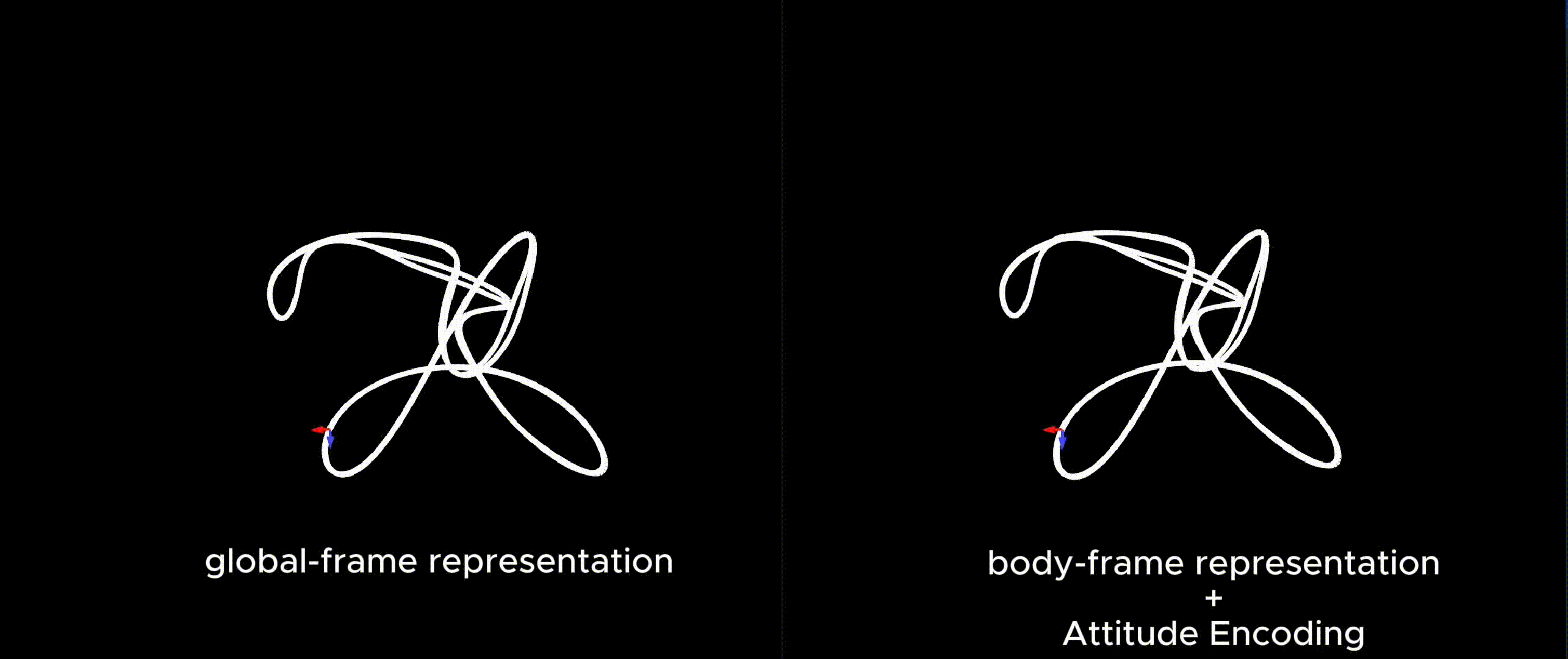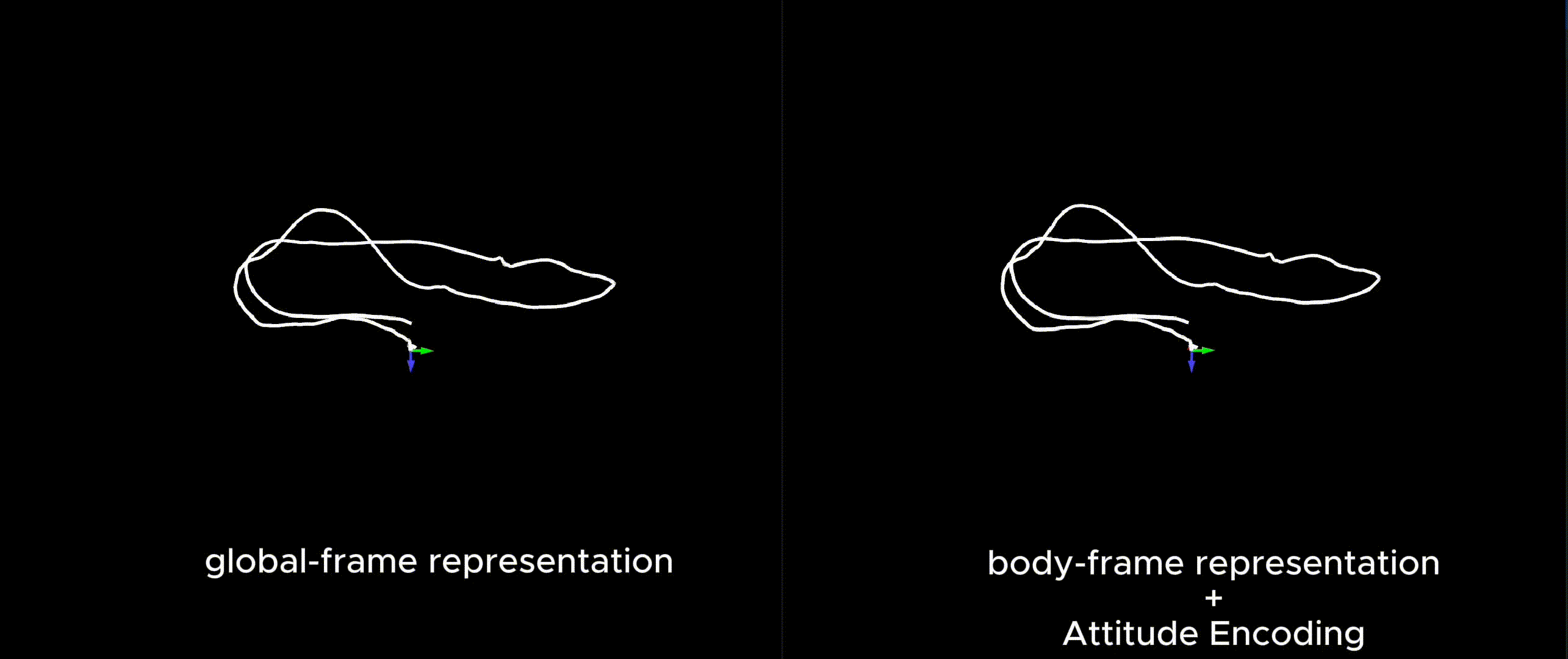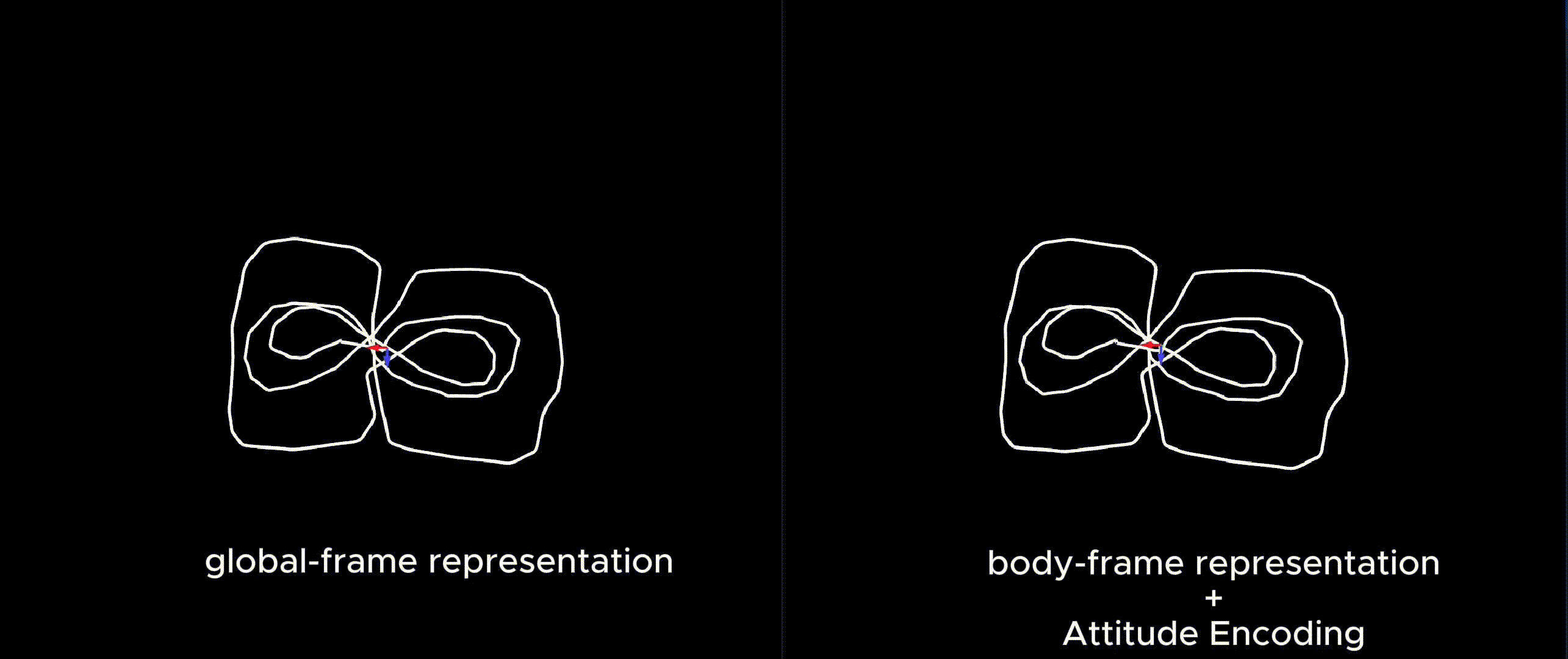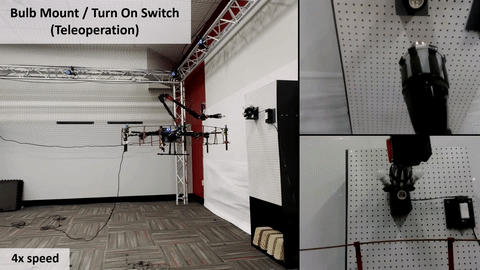AirIO: Learning Inertial Odometry with Enhanced IMU Feature Observability
Abstract
Inertial odometry (IO) using only Inertial Measurement Units (IMUs) offers a lightweight and cost-effective solution for Unmanned Aerial Vehicle (UAV) applications, yet existing learning-based IO models often fail to generalize to UAVs due to the highly dynamic and non-linear-flight patterns that differ from pedestrain motion. In this work, we identify that the conventional practice of transforming raw IMU data to global coordinates undermines the observability of critical kinematic information in UAVs. By preserving the body-frame representation, our method achieves substantial performance improvements, with a 66.7% average increase in accuracy across three datasets. Furthermore, explicitly encoding attitude information into the motion network results in an additional 23.8% improvement over prior results. Combined with a data-driven IMU correction model (AirIMU) and an uncertainty-aware Extended Kalman Filter (EKF), our approach ensures robutst state estimation under aggressive UAV maneuvers without relying on external sensors or control inputs. Notably, our method also demonstrates strong generalizability to unseen data not included in the training set, underscoring its potential for real-world UAV applications.
Introduction
Results
Without external sensors or control information, AirIO achieves up to a 86.6% performance boost over SOTA methods.
Methods
We identify the commonly used global-coordinate approach is suboptimal for UAVs due to their dynamic nature. Two simple steps to achieve significant gains:
- Predicting velocity using body-coordinate frmae representation.
- Explicitly encoding UAV attitude information.



System Pipeline

Video
BibTeX
@article{11045120,
author={Qiu, Yuheng and Xu, Can and Chen, Yutian and Zhao, Shibo and Geng, Junyi and Scherer, Sebastian},
journal={IEEE Robotics and Automation Letters},
title={AirIO: Learning Inertial Odometry with Enhanced IMU Feature Observability},
year={2025},
volume={},
number={},
pages={1-8},
keywords={Autonomous aerial vehicles;Sensors;Vehicle dynamics;Odometry;Principal component analysis;Pedestrians;Gravity;Feature extraction;Accuracy;Decoding;Aerial Systems: Perception and Autonomy;Deep Learning Methods;Localization},
doi={10.1109/LRA.2025.3581130}}

